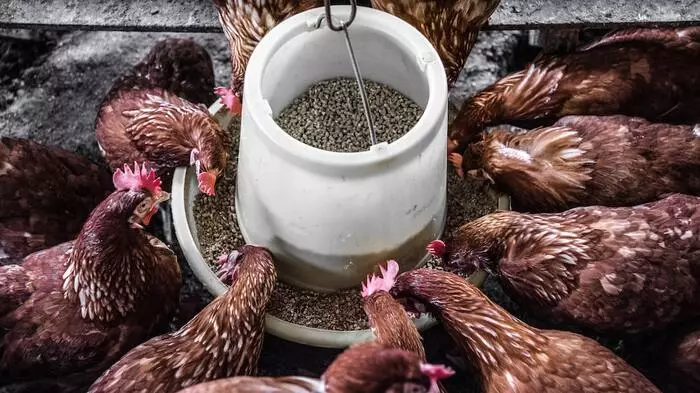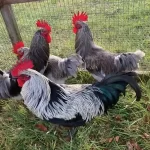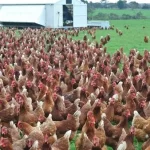Best Strategies for Feeding your Kienyeji Chicken
It is preferable to have as much knowledge as possible of the factors that affect the cost of production when poultry is kept primarily as a source of income, which it is in the majority of cases. According to numerous research on the economics of raising poultry, feed costs between 50 and 60 percent of the total cost of producing chicken meat and eggs. Because the cost of feeding supplies varies from year to year and even from season to season, it occasionally happens that a feeding that is cost-effective to utilize at one point may not be at another.
It follows this consideration that this article describes some best strategies for feeding your Kienyeji chicken.
- Providing the Nutritional Components
- Nutrients that Produce Energy
- Proteins
- Minerals
- Vitamins
- Sand and Water
Providing the Nutritional Components
The more appetizing two foods that are comparable in price and appear to have compatible nutritional value should be picked. Because any significant decrease in feed consumption typically results in slower growth or a decreased egg output, palatability is crucial.
Another crucial component of a feed mixture is its purported texture. One element affecting the texture and palatability is how finely the various ingredients are ground. It is best to avoid using feed combinations that are too finely ground or that might solidify in the mouth and be challenging to swallow. A granular, loose-textured blend of feeding ingredients is ideal because it is almost always edible. The feed particles in a diet meant for young chicks should be smaller than those that are meant for older chickens, but they should never be as thin as flour.
Nutrients that Produce Energy
Although every common component of a regular meal for chickens, except salt, limestone, and oyster shell, contributes some energy, the main sources are cereal grains and grain sorghums. Yet, compared to the former, the latter are not utilized as frequently in the feeding of chickens.
Oats and corn appear to be slightly inferior to barley and wheat for laying hens, respectively. There appears to be little to no difference in diets that contain equivalent amounts of corn, wheat, oats, or barley for chickens that are finished for the market. Yet, there is some evidence to suggest that hens finished on diets primarily composed of corn or barley have meat that is superior to chickens finished on diets primarily composed of wheat or oats. Oats and white corn are frequently utilized in finishing diets because they don't typically turn the skin yellow like yellow corn does.
Proteins
A protein is considered to be of high quality if it includes an adequate amount of the amino acids that the animal cannot produce on its own but needs for healthy growth and reproduction. Animal proteins and plant proteins are the two main categories of proteins used in the actual feeding of animals. Generally speaking, animal proteins are of higher quality than plant proteins.
Because protein supplements' nutritional values vary, it is impossible to provide strict guidelines for choosing them. However, it is advisable to obtain between 20 and 40% of the diet's protein from animal-derived feedstuffs, such as dry skim milk, dried buttermilk, fish meal, and meat scraps, to ensure that the protein is of a high enough grade.
Minerals
It is typically required to include some calcium carbonate, salt, and manganous sulfate in the chicken's food to provide all the necessary mineral elements. On occasion, adding some cooked bone meal as a source of phosphorus is preferable. Oystershell and high-calcium limestone are the ideal sources of calcium carbonate. Any high-quality table salt can be used. Nonetheless, it should be finely granular and free-flowing. It is preferable and occasionally required to supplement with calcium phosphate when the diet contains little or no animal protein. Steamed bone meal is the best format.
Vitamins
Because the chicken's vitamin A requirements for development and reproduction are very high and vitamin A is not particularly stable in feed mixtures, it is vital to pay special attention to the issue of delivering vitamin A when developing diets for chickens. So-called fortified cod liver oil, which is cod liver oil to which vitamin A and vitamin D concentrations from other fish oils or fish liver oils have been added, is the richest source of vitamin A used in feed combinations for chicken. Other vitamins include Vitamins B1, D, E, and K which must also be included in the feeding of your chicken.
Sand and Water
Although being a component of every animal tissue and extremely necessary for all life processes, water is frequently undervalued because of how ubiquitous it is. Water that is always fresh and clean should be available for poultry. Although hot weather necessitates more water than cold weather does, low temperatures are more likely to result in poultry receiving insufficient amounts of water than other times. This is due to the chilling effect of the ice-cold water and the bird's inability to break any ice that may form on the water's surface. These factors make basic water heating equipment a generally wise investment.
Grit enables chickens to utilize entire grains and gritty, fibrous feed items more effectively. If chicks are fed finely ground, low-fiber feed, it also helps to reduce gizzard erosion. Although oyster shells and limestone can be used as grit, it is not advised to do so due to the risk of the hens overconsuming calcium to obtain enough grinding material. Consequently, it is preferable to provide all of the necessary calcium in the diet and prevent the chickens from having access to calcium-containing dirt. It is important to choose a grit that is insoluble and nonfriable, or that cannot be crumbled. River gravel and natural pebbles work best as grit, though granite, feldspar, and quartz can also be used.
Conclusion
In conclusion, all the necessary nutrients must be delivered in sufficient amounts and as affordably as feasible if a profit is to be earned. The cost of the feed can frequently be decreased significantly by switching out one feeding component for another, however, there are situations when a certain feeding component can only be replaced by a combination of two or more other feeding components. Every time a substitution is made, it is important to carefully assess the resulting diet to ensure that it contains enough of each essential ingredient, including protein, minerals, and vitamins.
12 Things You Should Never Feed Your Kienyeji Chicken – And Why
Top 5 Ways of Maintaining Health Standards of your Kienyeji Chicken


